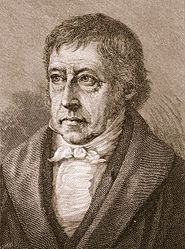
Back جيوفاني جنتيلي Arabic Giovanni Gentile AST Covanni Centile Azerbaijani Giovanni Gentile Catalan Giovanni Gentile Czech Giovanni Gentile Welsh Giovanni Gentile Danish Giovanni Gentile German Giovanni Gentile Esperanto Giovanni Gentile Spanish
Giovanni Gentile | |
|---|---|
 Gentile in the 1930s | |
| President of the Royal Academy of Italy | |
| In office 25 July 1943 – 15 April 1944 | |
| Monarch | Victor Emmanuel III |
| Preceded by | Luigi Federzoni |
| Succeeded by | Giotto Dainelli Dolfi |
| Minister of Public Education | |
| In office 31 October 1922 – 1 July 1924 | |
| Prime Minister | Benito Mussolini |
| Preceded by | Antonino Anile |
| Succeeded by | Alessandro Casati |
| Member of the Senate of the Kingdom | |
| In office 5 November 1922 – 5 August 1943 | |
| Appointed by | Victor Emmanuel III |
| Personal details | |
| Born | 30 May 1875 Castelvetrano, Kingdom of Italy |
| Died | 15 April 1944 (aged 68) Florence, RSI |
| Manner of death | Assassination by gunshot |
| Resting place | Santa Croce, Florence, Italy |
| Political party | National Fascist Party (1923–1943) |
| Height | 1.84 m (6 ft 0 in) |
| Spouse |
Erminia Nudi (m. 1901) |
| Children | 6, including Federico Gentile |
| Alma mater | Scuola Normale Superiore[1] University of Florence[1] |
| Profession | Philosopher, politician, pedagogue |
| Signature |  |
Philosophy career | |
| Notable work | |
| Era | 20th-century philosophy |
| Region | Western philosophy |
| School | Neo-Hegelianism |
Main interests | Metaphysics, dialectics, pedagogy |
Notable ideas | Actual idealism, fascism, immanentism (method of immanence)[2] |
 |
| Hegelianism |
|---|
| Forerunners |
| Principal works |
| Schools |
| Related topics |
| Related categories |
Giovanni Gentile (Italian: [dʒoˈvanni dʒenˈtiːle]; 30 May 1875 – 15 April 1944) was an Italian philosopher, fascist politician, and pedagogue.
He, alongside Benedetto Croce, was one of the major exponents of Italian idealism in Italian philosophy, and also devised his own system of thought, which he called "actual idealism" or "actualism", which has been described as "the subjective extreme of the idealist tradition".
Described by himself and by Benito Mussolini as the "philosopher of fascism", he was influential in providing an intellectual foundation for Italian fascism, notably through writing the 1925 Manifesto of the Fascist Intellectuals, and part of the 1932 "The Doctrine of Fascism" with Mussolini. As Minister for Public Education, he introduced in 1923 the so-called Gentile Reform, the first major piece of legislation passed by the Fascist government, which would last in some capacity until 1962. He also helped found the Institute of the Italian Encyclopedia with Giovanni Treccani, and was its first editor.
Though his political influence waned as Mussolini sought the alliance of the Catholic Church in the late 1920s, which conflicted with Gentile's secularism, he remained a faithful Fascist, even after the 1943 armistice with the Allies, and followed Mussolini into the Italian Social Republic. He was shot dead in 1944 by partisans of the Italian resistance.
- ^ a b Gregor, 2001, p. 1.
- ^ Gentile's so-called method of immanence "attempted to avoid: (1) the postulate of an independently existing world or a Kantian Ding-an-sich (thing-in-itself), and (2) the tendency of neo-Hegelian philosophy to lose the particular self in an Absolute that amounts to a kind of mystical reality without distinctions" (M. E. Moss, Mussolini's Fascist Philosopher: Giovanni Gentile Reconsidered, Peter Lang, p. 7).